What is “Media” on iPhone Storage and How to Reduce It?
Ever wondered what “Media” really includes in your iPhone storage? This broad category not only covers photos and videos but also extends to downloaded music, podcasts, and even attachments from messages. Tackling this section is important to free up space and keep your iPhone running smoothly. This guide looks into what constitutes media storage and offers tips to manage it easily.
What is “Media” in iPhone Storage?
The first step in reducing its impact on storage is to understand what constitutes “Media” in iPhone storage. Unlike other storage categories that might include apps, documents, and system data, “Media” primarily refers to content like:
- Photos and videos captured with the iPhone’s camera
- Music and podcasts downloaded for offline listening
- Movie and TV show downloads from iTunes or other streaming services
- Audio messages and attachments received in Messages
This category can often consume a significant portion of your iPhone’s storage, leading users to seek ways to clear media storage on the iPhone to free up space. It’s important to differentiate these files from others, such as app data, to manage and reduce media storage on the iPhone.
Ways to Reduce Media Storage
With a clear understanding of what ‘Media’ encompasses in iPhone storage it is time to consider how to manage this storage categoty. This section that will provide quick and simple steps to adjust media storage, ensuring your iPhone remains uncluttered.
Clean Up Your Photo Library
Optimizing your photo library frees up storage while it also makes it easier to find and enjoy your memories. Here’s how to do it without hassle:
Step 1: Review and Delete Unnecessary Photos and Videos

Begin by manually reviewing your photo library. Look for:
- Duplicate images: Often, we take several photos of the same scene. Keep the best one and delete the rest.
- Blurry photos or videos: These are usually not worth keeping and can free up space.
- Unwanted screenshots or memes: These can accumulate over time and take up unnecessary space.
Deleting these items will clear storage and declutter your library, making it more enjoyable to browse.
Step 2: Enable iCloud Photos for Optimized Storage
iCloud Photos can help manage your storage by storing full-resolution photos and videos in iCloud and keeping lightweight versions on your device. To enable iCloud Photos:
- Go to Settings > [your name] > iCloud.
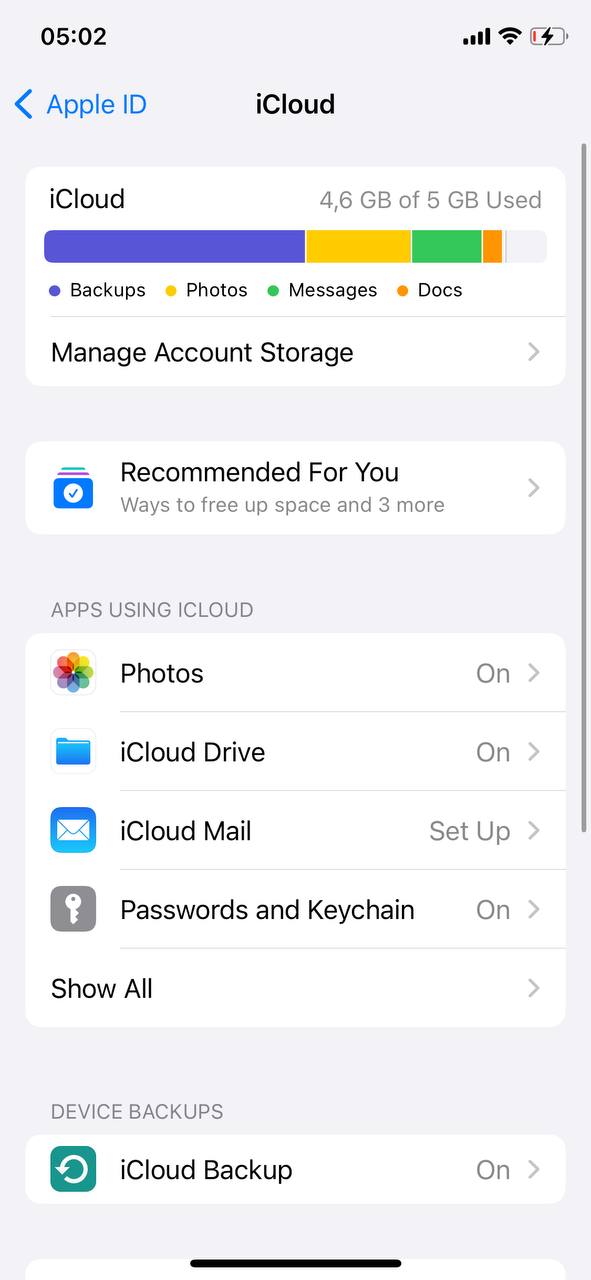
- Tap Photos, then turn on iCloud Photos.
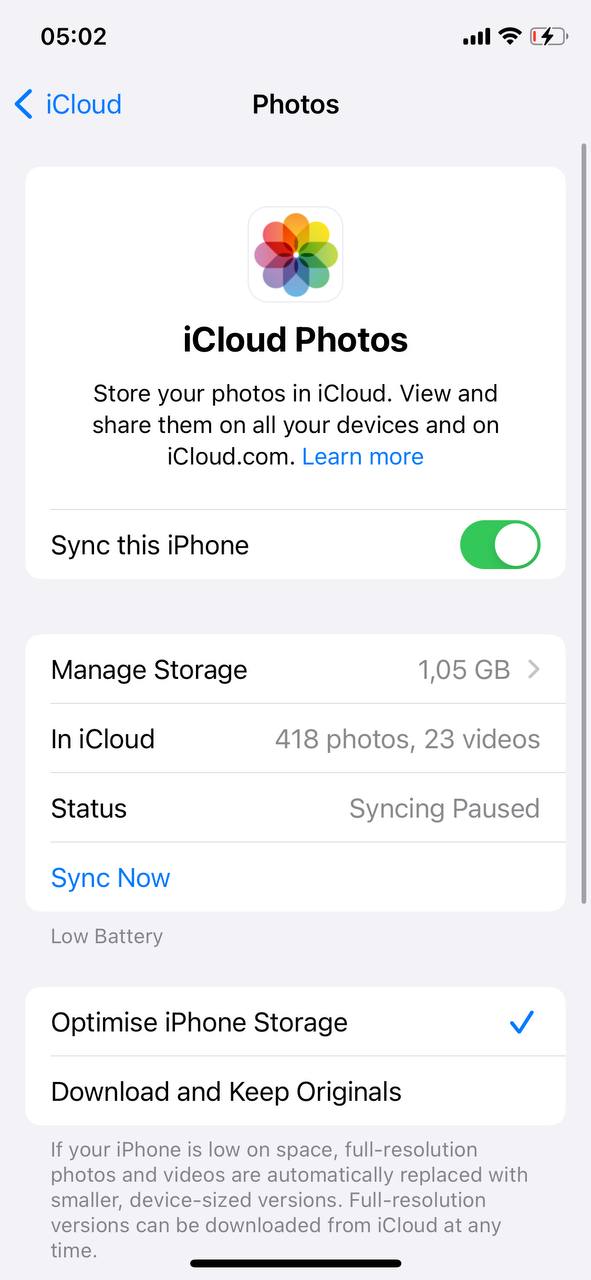
- Choose ‘Optimize iPhone Storage’ to keep smaller, space-saving versions on your device.
This step allows you to have access to your entire library without consuming all of your device’s storage.
Step 3: Explore Cleanup Tools
To further declutter your photo library, consider use of specialized cleanup apps. These tools can help you0 identify and remove unnecessary photos with ease:
- Gemini Photos: Not just a duplicate finder, Gemini Photos scans for look-alikes and helps you choose the best shot while suggesting less significant ones for deletion. It’s also great for clearing out old screenshots and blurred images, making your library cleaner and more organized.
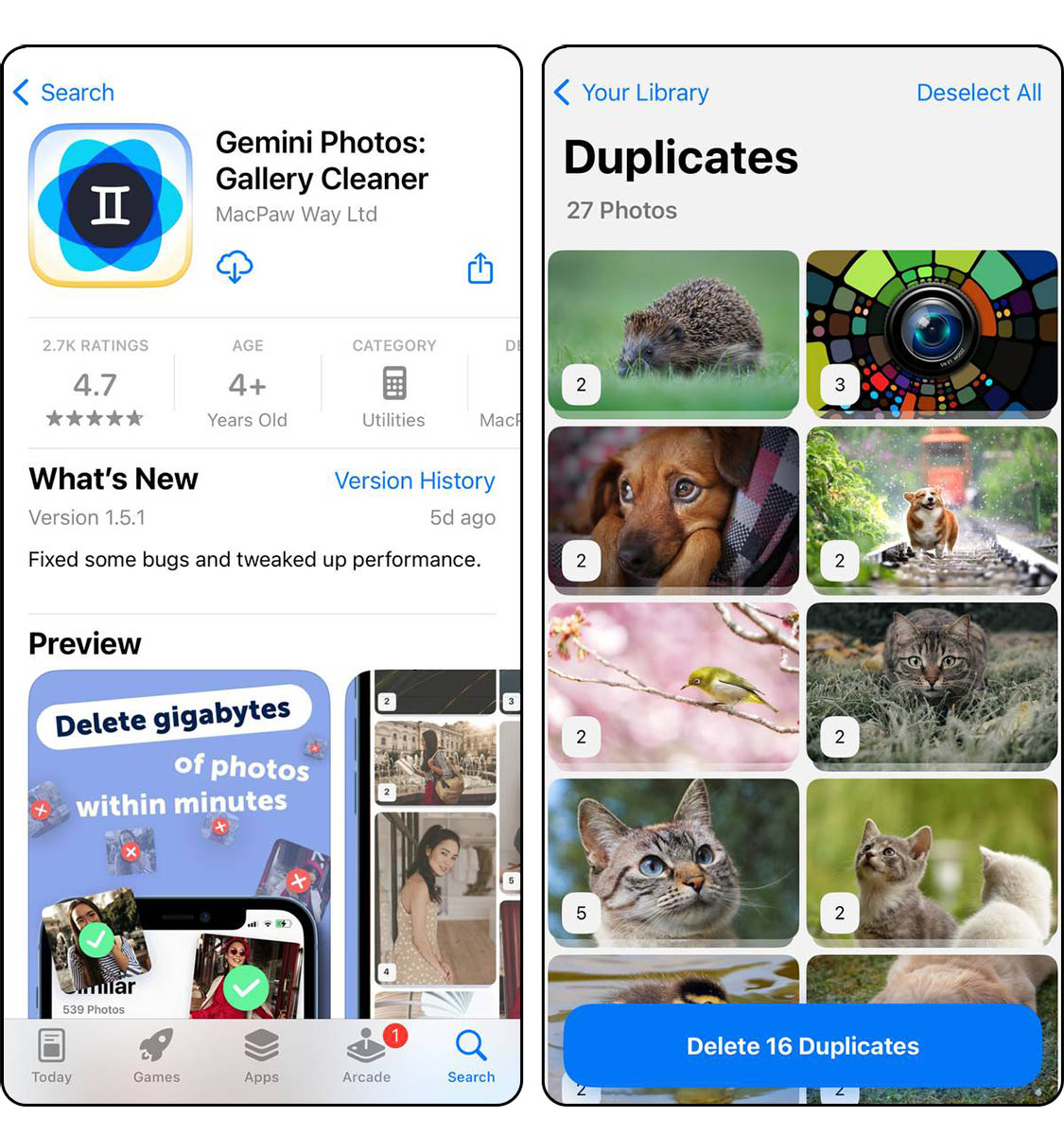
- Slidebox: This app introduces a fun and fast way to manage photos by swiping. You can quickly sort, delete, or compare similar photos. Its intuitive interface makes photo organization less of a chore and more like a quick game.

- Cleanup: Cleanup app excels in detecting duplicate and similar photos, but it doesn’t stop there. It also identifies large files and blurry images, offering a comprehensive cleanup that can significantly free up your iPhone’s storage.
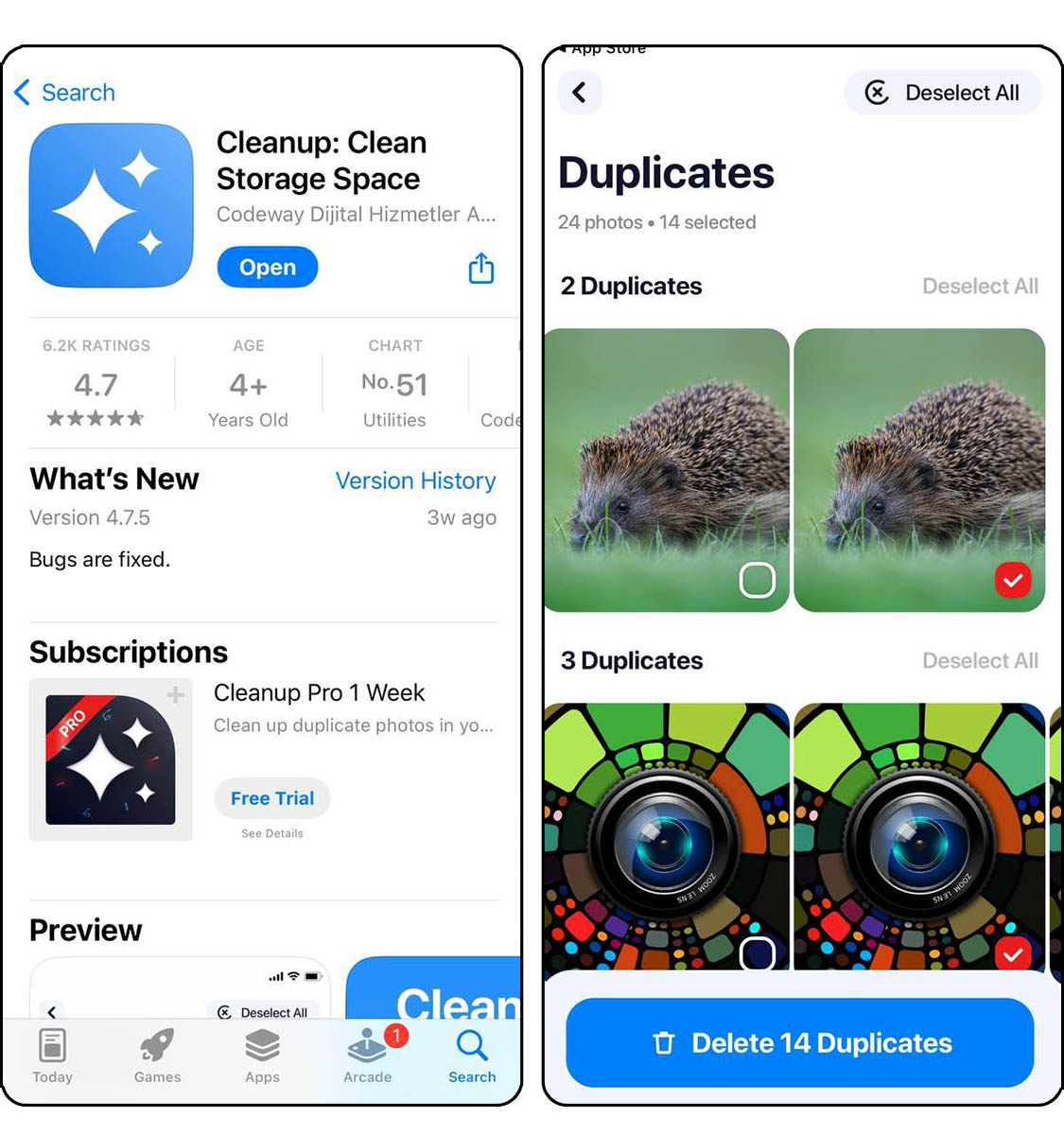
These tools can significantly speed up the cleaning process, especially for large libraries. Each of them offers unique features to help you streamline your photo library and reclaim storage space on your iPhone.
Manage Other Media Types
Beyond photos, your iPhone stores various other media types that can consume significant storage. Managing these effectively can help reclaim space.
Step 1: Review and Remove Unwanted Media
Start by evaluating your collection of music, movies, podcasts, and ringtones. Remove items that you no longer use or need:
- Music: In the Music app, tap and hold on any song, album, or artist then select ‘Remove…’ and choose ‘Only Remove Download’ to delete them from your device’s memory.
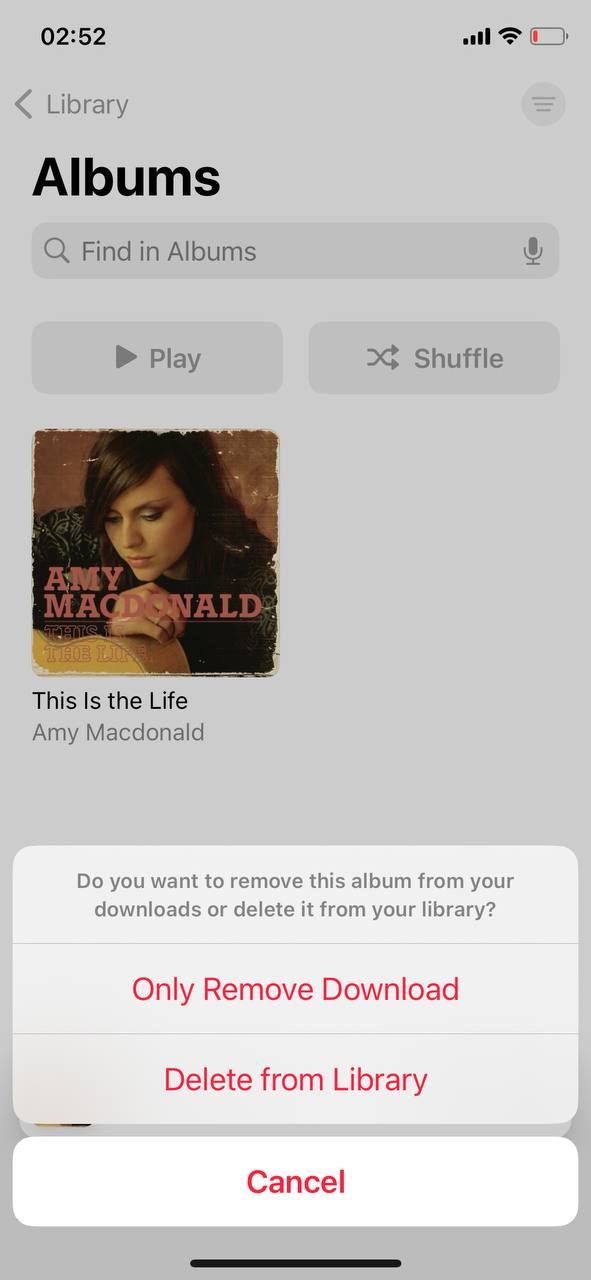
- Movies and TV Shows: In the TV app, find any downloaded content in library and remove it in similar way if no longer needed.
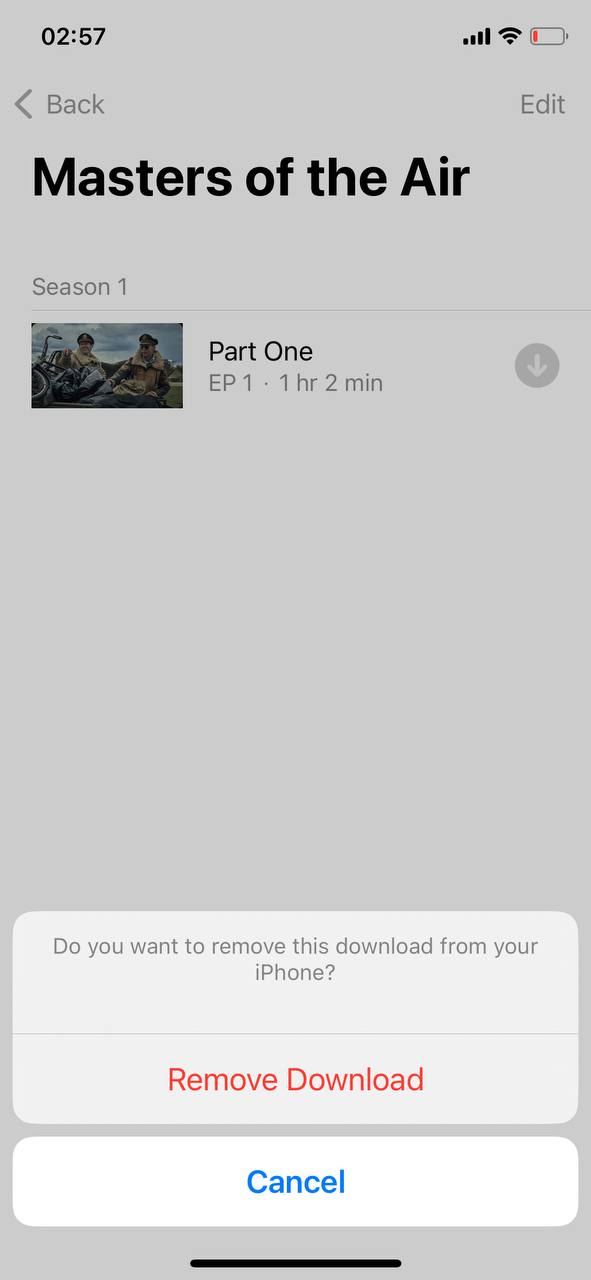
- Podcasts: Delete downloaded episodes that you’ve listened to or are not interested in keeping from your library.
- Ringtones: If you have lots of custom ringtones, consider keeping only your favorites. You can delete them by swiping and selecting ‘Delete’ in ‘Sounds and Haptics’ section of the Settings.
Step 2: Opt for Streaming
Whenever possible, use streaming services for music and video content to avoid storing large files on your device: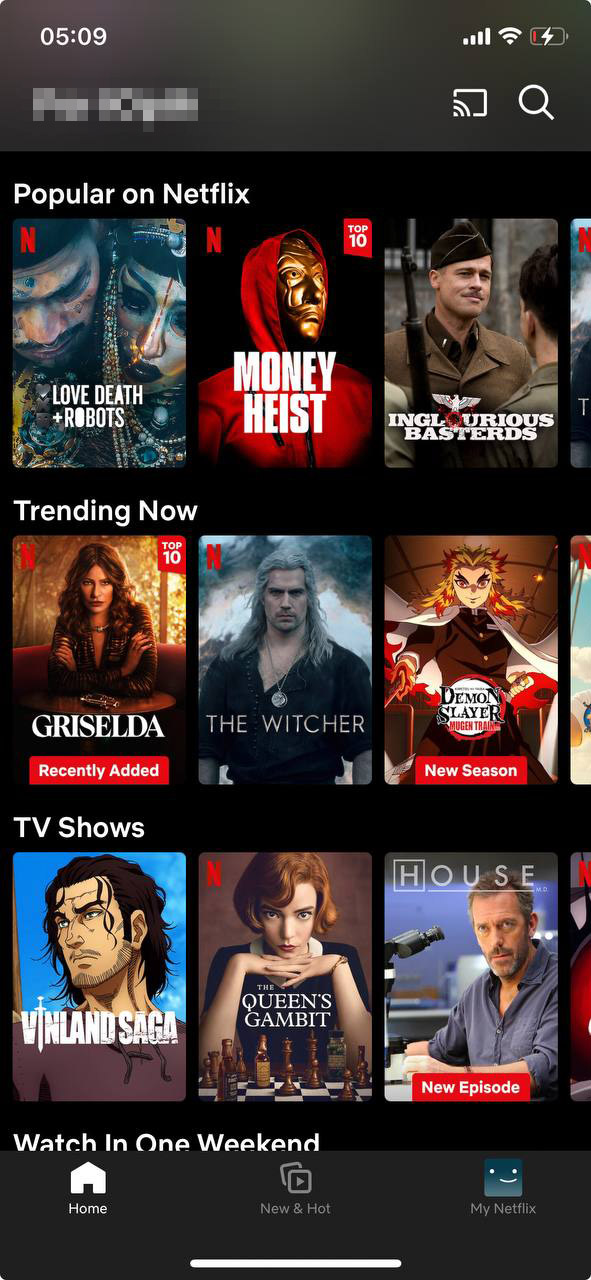
- Utilize services like Apple Music or Spotify for music and Apple Podcasts for podcasts.
- For movies and TV shows, streaming platforms like Netflix or Hulu can save space compared to downloading content.
Step 3: Clear App Caches
Some apps store temporary files that can take up unnecessary space. Clearing these can free up storage:
- Check the settings of individual apps for options to clear cache or temporary files.
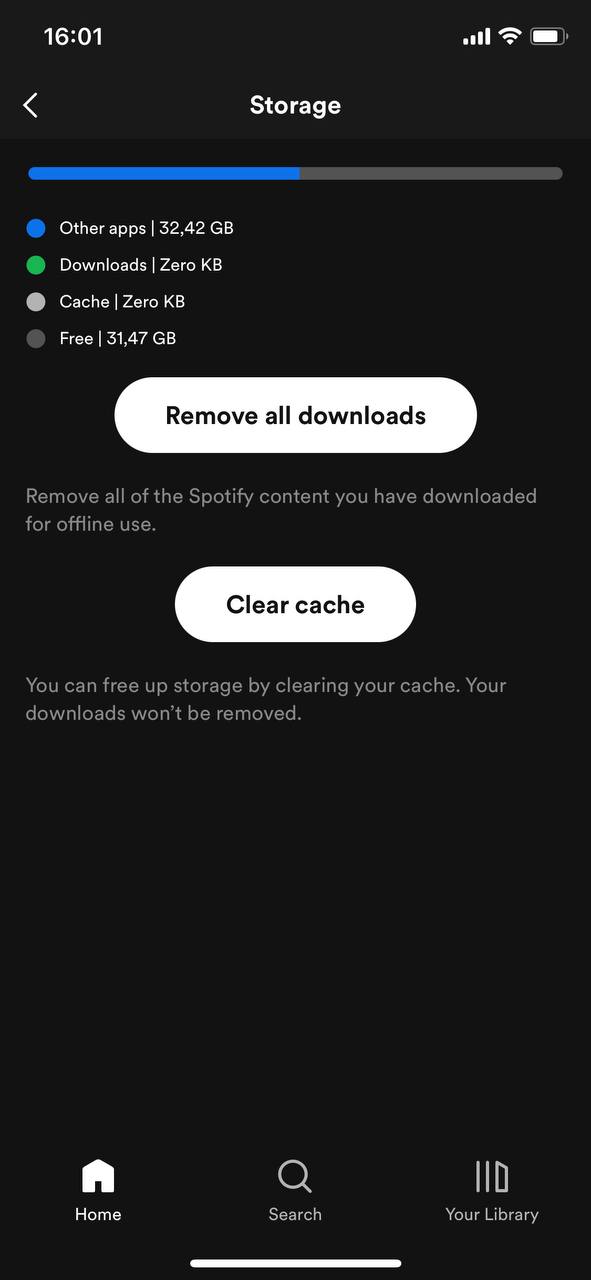
- Not all apps offer this feature, and for some, the only way to clear the cache may be to uninstall and reinstall the app.
By following these steps, you can significantly reduce the amount of storage occupied by various media types on your iPhone, keeping it free for other needs that may arise in the futureq.
Long-Term Measures for Media Storage
To maintain optimal levels of media storage on your iPhone, adopting certain preventive measures can be highly beneficial. These practices help ensure your device remains efficient, with ample space for important files and new content.
Offload Unused Apps
Offloading unused apps is an effective way to manage storage on your iPhone. This feature removes the app but retains its data, allowing for easy reinstallation without losing your information.
- Open Settings: Start by navigating to the Settings app on your iPhone.
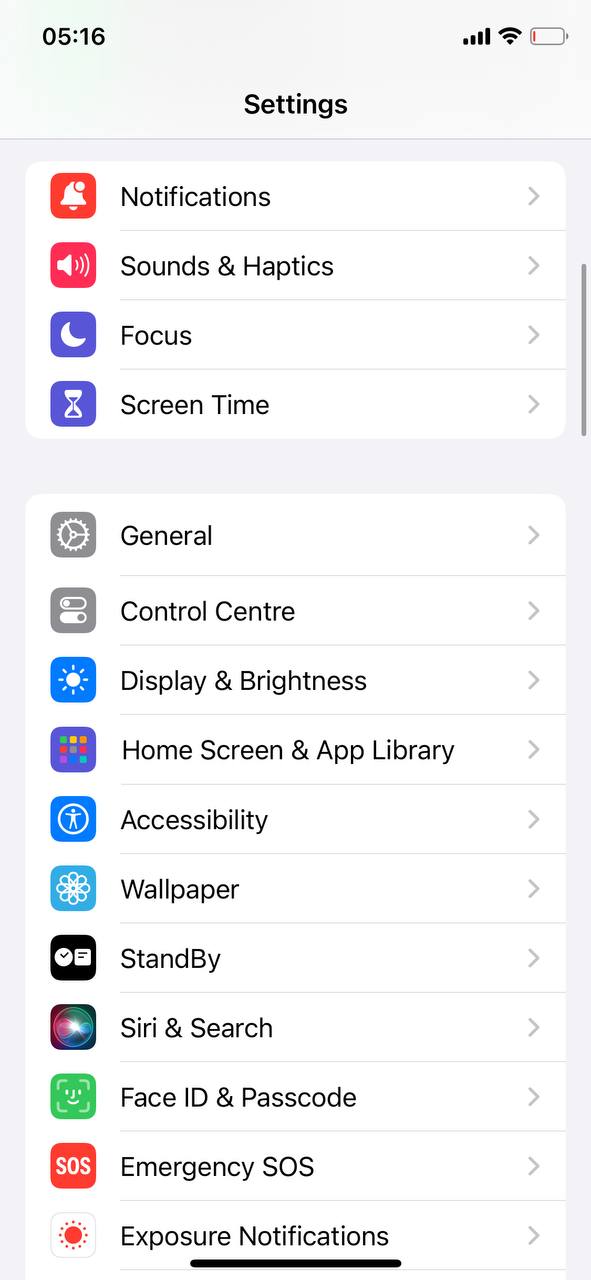
- Select ‘General’: Within Settings, find and tap on the ‘General’ option.
- Go to ‘iPhone Storage’: Under General, locate and select ‘iPhone Storage’ to view your storage usage.
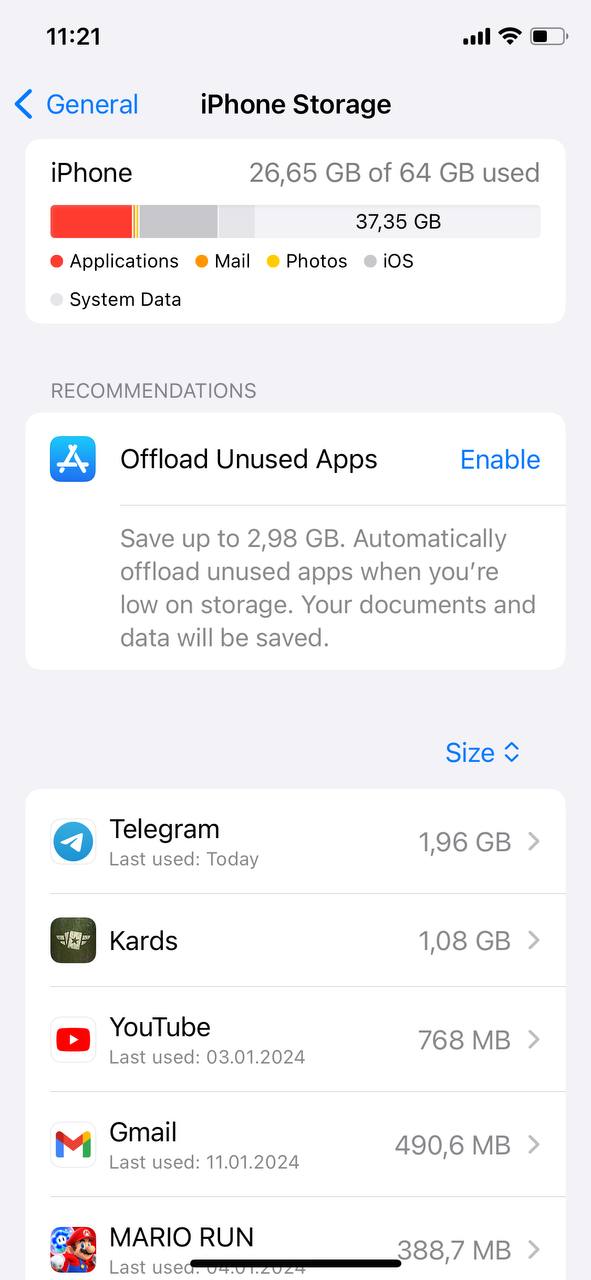 Enable Offload or Manually Offload Apps: Activate ‘Offload Unused Apps’ for automatic offloading or choose individual apps to offload by tapping on the app and selecting ‘Offload App’.
Enable Offload or Manually Offload Apps: Activate ‘Offload Unused Apps’ for automatic offloading or choose individual apps to offload by tapping on the app and selecting ‘Offload App’.
Offloading unused apps can indirectly impact media storage by freeing up space that apps may use for cached files and data, including media content. This process can make more storage available for other media files, helping to maintain a balanced and efficient storage system on your iPhone.
Enable Automatic Message Cleanup
To keep your iPhone storage optimized, iOS offers a feature to automatically delete older messages and their attachments. Activating this can help preserve storage space by ensuring only recent and necessary messages are kept.
- Go to Settings: Open the Settings app on your iPhone.
- Select Messages: Scroll down and tap on ‘Messages’.
- Find Message History: Look for the ‘Message History’ section.
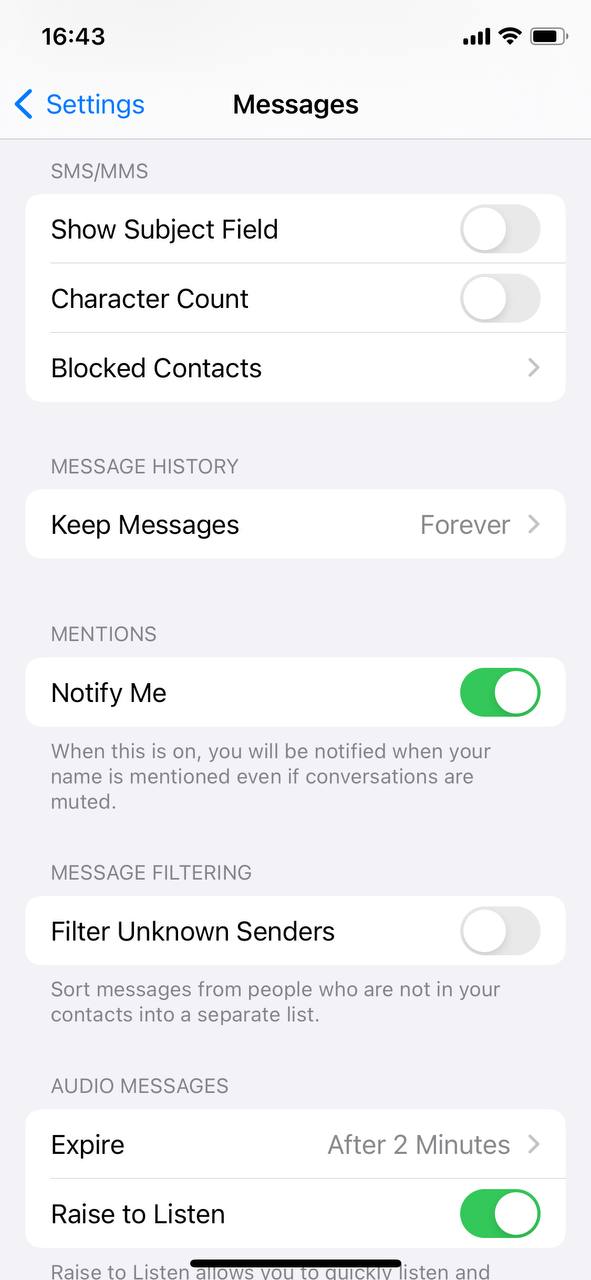
- Set Keep Messages: Tap ‘Keep Messages’ and choose the desired duration (30 days, 1 year, or Forever). Selecting 30 days or 1 year will automatically delete messages older than the selected period.
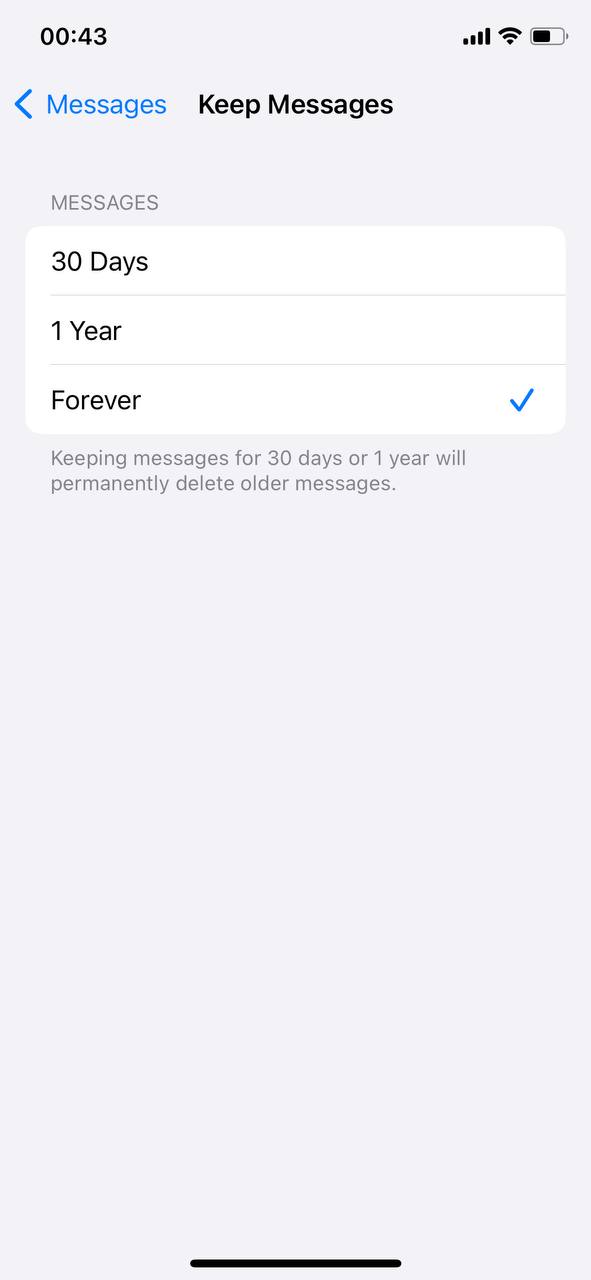
This setting helps manage your media storage by automatically clearing out older, unneeded messages and attachments, which helps to prevent media buildup.
Leverage Cloud Storage Services
Using cloud storage services like Google Drive, Dropbox, or iCloud Drive can significantly help in managing your iPhone’s media storage. These services allow you to store media files in the cloud, freeing up space on your device.
- Choose a Cloud Service: Select a cloud storage provider that suits your needs. iCloud is integrated into iOS, while Google Drive and Dropbox are available as apps.
- Install the App: If using Google Drive or Dropbox, download the app from the App Store.
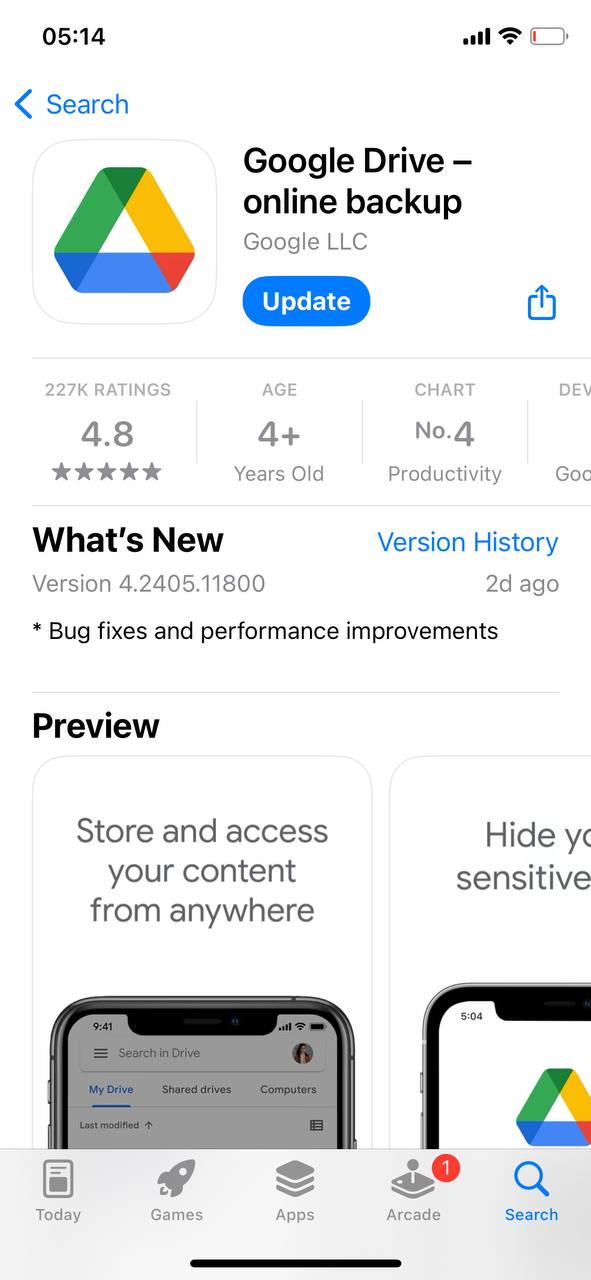
- Upload Media Files: Open the cloud storage app and upload your media files from your iPhone. You can select photos, videos, and other media files to upload.
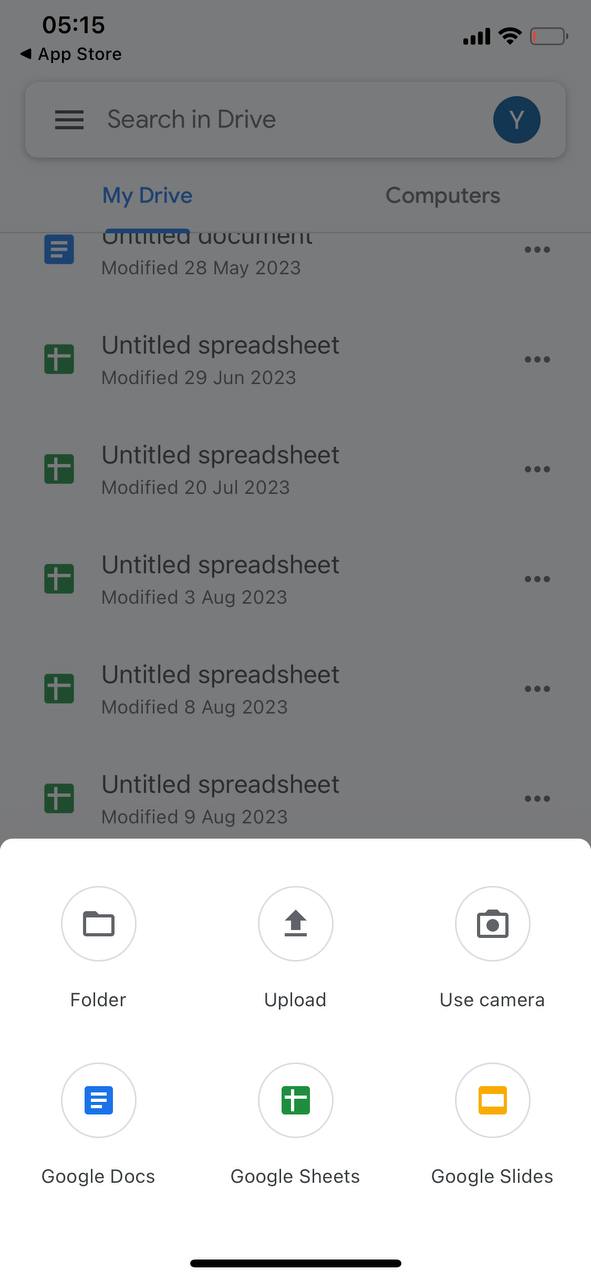
- Access Files Anytime: Once your files are uploaded, you can access them from any device, anytime, as long as you have internet access. This keeps your media safe and accessible without using up your iPhone’s storage.
By storing media files in the cloud, you can easily prevent them from taking up space on your iPhone, while being able to access them at any time..
Conclusion
Managing media storage on your iPhone is quite easy when you know what takes up space and how to handle it. In this article we have shown you the ins and outs of media storage, from photos to downloads, and given you advices on how to keep it under control. Regular cleanup, smart storage use, and making the most of cloud services can make a big difference. Stick to these methods, and you’ll see a noticeable improvement in your iPhone’s storage without much hassle.










 Enable Offload or Manually Offload Apps: Activate ‘Offload Unused Apps’ for automatic offloading or choose individual apps to offload by tapping on the app and selecting ‘Offload App’.
Enable Offload or Manually Offload Apps: Activate ‘Offload Unused Apps’ for automatic offloading or choose individual apps to offload by tapping on the app and selecting ‘Offload App’.


